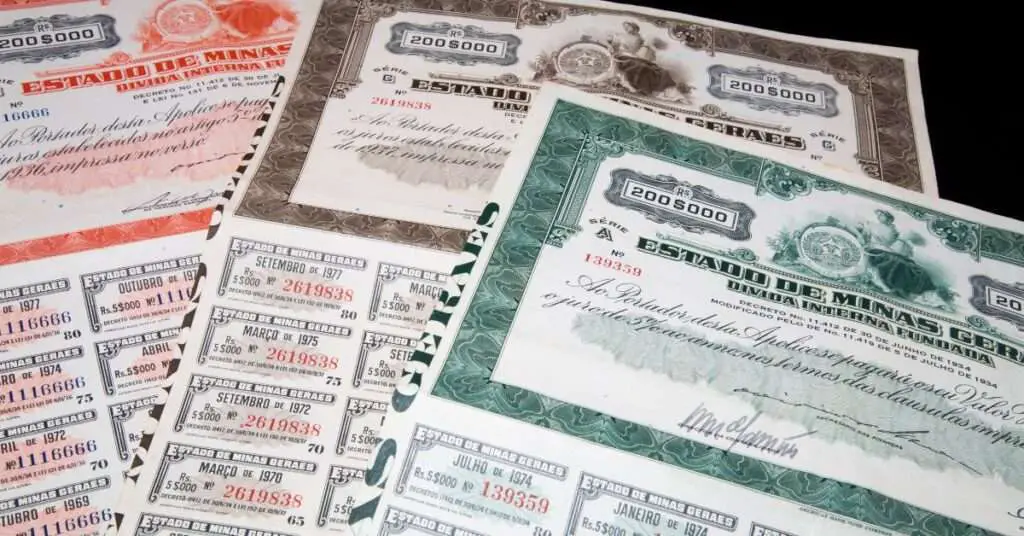Hello, financial explorers! Today, we’re diving deep into a topic that is diversified investment. If you’ve ever wondered what financial advisors mean when they talk about a “diversified portfolio,” buckle up. We’re about to embark on a journey into the heart of investment strategy!
What is Diversification?
In its simplest form, diversification is the practice of spreading your investments across various types of assets (such as stocks, bonds, and real estate) to manage risk. Think of it as not putting all your investment eggs in one basket.
Let’s dive a little deeper into diversification.
Think of diversification as creating a financial smorgasbord. Just as you wouldn’t fill your plate with only cheese at a buffet (or maybe you would, but let’s pretend you wouldn’t), you shouldn’t fill your portfolio with just one type of investment. Instead, you spread your money across different investments, which can help balance the market’s ups and downs.

Let’s consider an example. You’re a successful software developer. Let’s call you ‘CodeMaster.’ You have $10,000 to invest. Instead of pouring all that money into tech stocks (a move that might seem logical, given your profession), you decide to diversify.
You put $2,500 into tech stocks, sure, because you understand and believe in that sector. But you also put $2,500 into healthcare stocks, another promising industry.
Then, you put $2,500 into bonds, which are typically more stable and might not provide huge returns.
Lastly, you decide to put the remaining $2,500 into real estate through a Real Estate Investment Trust (REIT).
This way, you’re not reliant on the performance of a single sector or asset class.
In this scenario, if the tech industry suffers a setback, you might see a dip in that part of your portfolio. But your healthcare stocks, bonds, and real estate investments could still perform well, helping offset your losses.
This, in essence, is the beauty of diversification. It doesn’t guarantee profits or protect entirely against loss, but it can help to manage risk and smooth out potential bumps in your investment journey.
Types of Diversified Investments
As we’ve learned, diversity in investing is as necessary as having a variety of cheese at a wine party (for all you gouda lovers out there, am I right?). Diversified investments come in various shapes and sizes. Let us understand some of them:
Stocks
First up, we have stocks. Now, investing in stocks doesn’t mean you buy shares from ‘Techie Corp’ just because you’re a tech geek. No, no, diversity is the name of the game here.

You might buy shares from ‘Health Hero’, a rising star in the health sector, and even ‘GreenGiant’, a pioneer in renewable energy. This way, if ‘Techie Corp’ takes a nosedive, you’re not left scraping the bottom of your investment barrel.
Bonds
Next, we have bonds, the tortoises of the investment race. They may not sprint to the finish line, but they do provide steady, reliable returns. You might choose bonds with different maturities – some short-term, some long-term – to further diversify your bond investments.

Real Estate

Moving on, let’s talk about real estate. Who doesn’t love the idea of owning property? But buying a mansion might be a tad out of reach for most of us. Enter Real Estate Investment Trusts (REITs). REITs allow you to invest in real estate without having to buy a physical property. Plus, they pay out a portion of their income as dividends. Win-win!
Commodities
Next up, commodities. These are physical goods like gold, oil, or even coffee. Imagine if you’d invested in coffee back in 1990. Given our current coffee-obsessed culture, you’d be laughing all the way to the bank!

Cryptocurrencies
Last but not least, cryptocurrencies. These digital assets have been making waves in recent years. If you’d purchased $1,000 worth of Bitcoin in 2013, you’d be a multimillionaire today! But remember, cryptocurrencies are highly volatile, so invest with caution.

The value of Bitcoin from 2013 to the present is depicted in the following chart, revealing the extraordinary volatility and impressive growth this cryptocurrency has experienced in the past decade.
The Importance of Diversification
Let’s dive into a tale you might find relatable. Imagine you’re a tech enthusiast. You’ve worked hard, saved up a decent amount of money, and you’re ready to invest. Being a tech buff, you put all your hard-earned money into technology stocks, believing in the sector’s potential.
One day, you wake up to the news that the tech bubble has burst. Tech stocks have taken a nosedive, and with it, your entire investment. It’s a rude awakening, one that illustrates the importance of diversification in the world of investing.
Diversification, in the realm of investing, is much like maintaining a balanced diet. You wouldn’t have burgers for every meal, would you? (I know, they’re delicious, but bear with me!). The same goes for your investment portfolio.
Let’s run another scenario alter the narrative a bit. Imagine you’re enthusiastic fan of the energy sector. You’ve managed to put aside a good chunk of change and are eager to jump into the world of investing. Being an energy devotee, you’re drawn to invest all your hard-earned money into energy stocks, but then you recall the magic word: “diversification”.

So, instead, you cleverly scatter your savings across energy stocks, a slice of emerging market funds, a handful of stable government bonds, and even a pinch of precious metals.
Now, if the energy sector stumbles, you’re not left empty-handed. Your other investments are there to cushion the fall. You might even breathe a sigh of relief, knowing you’ve navigated the stormy seas of the market downturn.
Now, let’s take a different path. Suppose Jane chose to buy $10,000 of ‘Eco Energy’ stock in 2014. If we zip forward to today, the investment has blossomed into a whopping $150,000! Sounds like a fairytale, right? But what if Jane had spread the same amount into a diversified portfolio of stocks, bonds, and real estate? She might not have struck gold with ‘Eco Energy’, but her portfolio would likely have grown steadily over time, saving her from many restless nights.
So, diversification, the quiet champion of investing, is all about not placing all your eggs in one basket. It’s about maintaining the right balance of risk and reward, and most importantly, it’s about securing your peace of mind.
Remember, investing isn’t a 100-meter dash; it’s more like a cross-country race. And diversification? Well, it’s your trusty pacer, helping you stay in the race for the long haul.
How to Achieve a Diversified Portfolio
Diversification isn’t just about investing in different companies. It’s about spreading your investments across different asset classes, sectors, and even countries.
Let’s dive into the juicy bit – how do you build a diversified portfolio? It might sound like a Herculean task, but fear not, we’re here to break it down for you.
Diversification isn’t just about throwing your cash at a smorgasbord of companies. It’s like organizing a potluck dinner. You wouldn’t ask all your friends to bring pizza, would you? (Well, unless you’re a pizza aficionado!)
No, you’d want a spread. A little bit of this, a little bit of that. Similarly, diversification is about spreading your investments across different asset classes, sectors, and even countries. This way, you’re not overly dependent on one particular area
And here’s the kicker: geographical diversification. If you’ve only invested domestically, what happens when your local economy hits a rough patch? To mitigate this risk, consider global diversification. Invest in foreign markets, like emerging markets or established economies.
For instance, imagine having stocks in ‘EuroStable Ltd’, a European company, or ‘EmergingMarketsFund’, a fund focusing on growing economies like India or Brazil. This way, even if the US economy isn’t performing well, your foreign investments could help balance the scales.
Remember, diversification is all about balance. It’s like being a trapeze artist – you’re trying to stay steady while swinging high above the ground. Too much of one thing, and you could lose your balance.
In the end, always remember that investing is personal. What works for one person may only work for one person. So, consult with a financial advisor, do your research, and create a diversified portfolio that aligns with your financial goals and risk tolerance.
Remember, folks, diversification is a journey, not a destination. It’s about constant evaluation and adjustments. And always, always seek professional advice before making significant investment decisions.
That’s all for today, financial explorers! Until next time, may your investments be diverse and your returns be high!
FAQs
What is an example of diversified investment?
A diversified investment is a strategy that involves spreading investments across various types of assets to reduce risk. Here’s an example:
Consider an investment portfolio that contains the following:
1. Stocks: These are shares in individual companies. For example, you might hold stocks in technology companies like Apple or Amazon, healthcare companies like Johnson & Johnson, and consumer goods companies like Procter & Gamble.
2. Bonds: These are debt securities issued by governments and corporations. You might have US Treasury, municipal, or corporate bonds in your portfolio.
3. Real Estate: This could include owning a rental property or investing in a Real Estate Investment Trust (REIT), which allows you to invest in real estate without needing to own a property physically.
4. Mutual Funds or ETFs: These are collections of stocks, bonds, or other assets managed by a professional. For instance, you could invest in a fund that tracks the S&P 500, or an ETF focused on emerging markets.
5. Commodities: These could include tangible assets like gold, silver, oil, or agricultural products.
This diversified approach helps to balance the risk across different asset classes. If one asset performs poorly, another may perform well, potentially offsetting the loss. It’s important to remember that all investments come with risk, and diversification does not guarantee profits or protect against loss. Please consult a financial advisor to design an investment strategy that fits your needs and risk tolerance.
What is diversified investing?
Diversified investing is an investment approach aimed at managing risk by spreading investments across different types of assets, sectors, or geographic regions. Here’s a simple breakdown:
1. Concept: Diversified investing is based on the idea “Don’t put all your eggs in one basket”. It’s a strategy to lower the risk of losing money if one investment type doesn’t perform well.
2. Types of Assets: Assets can include a variety of investment options such as stocks, bonds, real estate, mutual funds, ETFs, and commodities.
3. Benefits: Diversification can help to smooth out returns over time. If one asset or sector underperforms, other parts of your portfolio may still perform well, potentially offsetting losses.
4. Considerations: While diversified investing can help to manage risk, it’s important to note that it doesn’t guarantee profits or fully protect against losses.
5. Strategy: The right mix of assets for diversified investing depends on factors like your financial goals, risk tolerance, and investment timeline. It’s recommended to seek advice from a financial advisor to create a diversification strategy that suits your specific needs.
Remember, it’s essential to regularly review and adjust your portfolio to maintain the level of diversification that aligns with your investment goals.
Which type of investment is most diversified?
Mutual funds and exchange-traded funds (ETFs) are often considered some of the most diversified types of investments. Here’s why:
1. Mutual Funds: A mutual fund pools money from multiple investors to invest in a variety of assets like stocks, bonds, or other securities. This wide range of investments provides built-in diversification.
2. Exchange-Traded Funds (ETFs): Similar to mutual funds, ETFs are collections of stocks, bonds, or other assets. ETFs are traded on stock exchanges, and they offer a convenient way to achieve diversification.
3. Asset Allocation: Both mutual funds and ETFs come in many varieties, focusing on different sectors, countries, or types of securities, which allows for further diversification. Some even replicate entire indexes, like the S&P 500, offering exposure to a broad segment of the market.
Remember, while mutual funds and ETFs provide diversification within one investment, it’s important to diversify your entire investment portfolio based on your financial goals and risk tolerance. No single type of investment guarantees profits or protects fully against loss, and diversification itself does not assure a profit or protect against loss. Please consult with a financial advisor to understand the best investment strategy for you.
What is the portfolio diversification formula?
Diversification in investing doesn’t have a precise formula like a mathematical equation. Instead, it’s a strategy that involves spreading your investments across various asset types, industries, or geographic regions to manage risk. Here’s a simple approach:
1. Asset Allocation: Decide what percentage of your portfolio you want to dedicate to different asset classes. This could include stocks, bonds, cash equivalents, real estate, commodities, etc. Your decision should align with your financial goals, risk tolerance, and investment timeline.
2. Diversify Within Asset Classes: Within each asset class, aim for further diversification. For example, if investing in stocks, you could diversify across different sectors (technology, healthcare, financial, etc.), company sizes (large-cap, mid-cap, small-cap), and geographical regions (U.S., Europe, Asia, etc.).
3. Rebalance Regularly: Over time, some investments might perform better than others, which could skew your original asset allocation. To maintain your desired level of diversification, it’s important to rebalance your portfolio periodically. This usually involves selling some better-performing assets and buying more underperforming ones to return to your original asset mix.
4. Review: Regularly review your investment goals and risk tolerance, adjusting your diversification strategy as needed.
Remember, diversification does not assure a profit or protect against loss in declining markets, and there’s always the risk that you could lose money. It’s often recommended to seek advice from a financial advisor to develop a diversification strategy that suits your individual needs and circumstances.

